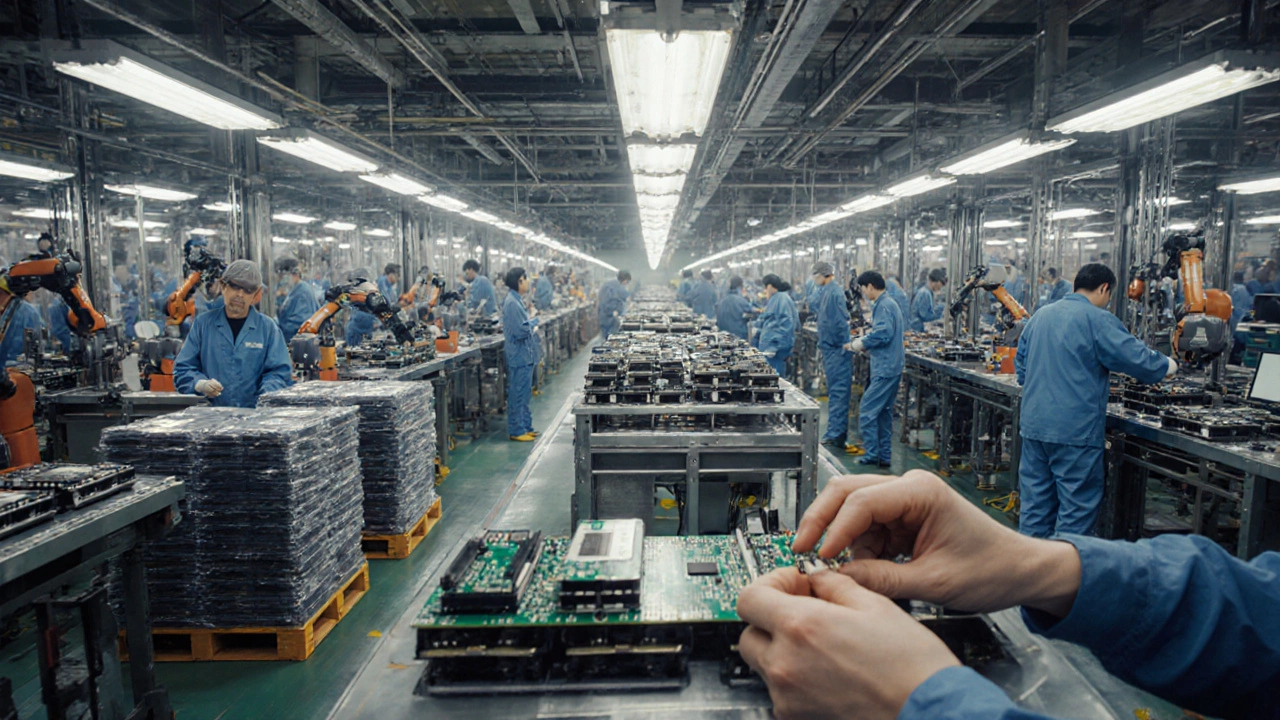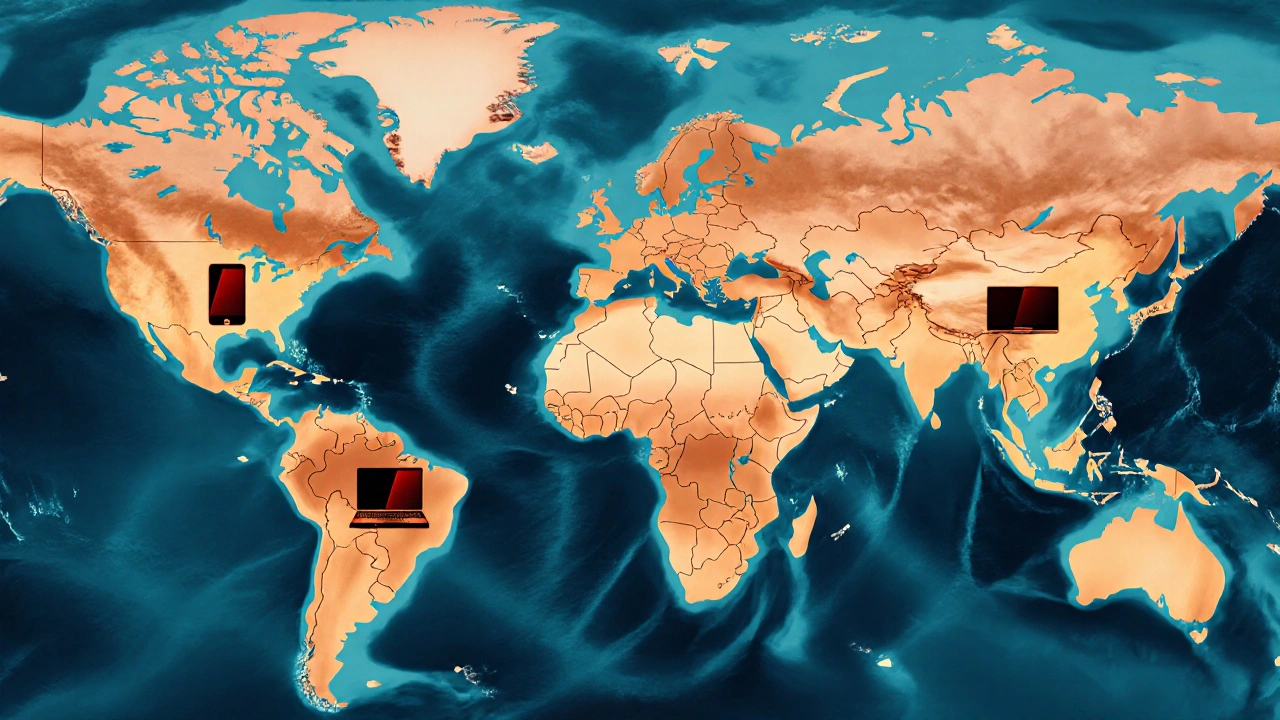Electronics Price Estimator
Calculate Your Electronics Purchase Cost
Estimate the total cost of importing electronics by entering your purchase details below. Based on the latest data from 2025.
Ever wondered which country lets you snag the cheapest electronics on the planet? With prices shifting thanks to supply‑chain tweaks, exchange‑rate swings, and new tax rules, the answer isn’t static. This guide breaks down the latest data (as of October2025), shows you why some nations beat the rest, and gives you practical steps to score the lowest‑priced gadgets without getting burnt by hidden fees.
How We Compare Prices Across Countries
To keep the comparison fair, we used three core data sources:
- Electronics price index is a composite metric that weighs smartphones, laptops and TVs against a US baseline of 100. The index is published quarterly by the International Trade Observatory.
- Retail listings from major online marketplaces such as Amazon, AliExpress and local e‑commerce giants (e.g., Flipkart in India, MercadoLibre in Mexico). Prices were averaged over 1,000 SKUs per category.
- Official import tariffs and VAT rates for consumer electronics, pulled from each country’s customs authority.
We then converted all prices to US dollars using the mid‑month exchange rate from the World Bank. The result is a snapshot of what a typical consumer would pay for a mid‑range smartphone, a 15‑inch laptop, and a 55‑inch TV.
Top Countries Offering the Cheapest Electronics
Here are the five nations that consistently rank lowest on the price index, along with a quick why‑behind each.
- China is the world’s largest electronics manufacturer, home to component factories that serve global brands. Massive scale, low labor costs, and a favorable export‑tax regime keep domestic prices down.
- Vietnam has become a hotspot for contract electronics assembly, attracting firms fleeing rising Chinese wages. The country offers a 0% import duty on most finished consumer devices.
- India benefits from a huge domestic market and government incentives for local manufacturing under the 'Make in India' program, which includes tax holidays for electronics.
- Mexico leverages its proximity to the US to run just‑in‑time supply chains. NAFTA‑style trade agreements reduce tariffs on finished goods entering the North American market.
- Poland hosts several European‑scale assembly plants that import components from Asia but add low‑cost labor in Central Europe. Its EU membership means a standardized VAT system that’s lower than many Western European peers.

Why These Countries Beat the Rest
Three main forces drive the price advantage:
- Manufacturing scale and proximity to component suppliers. China’s Shenzhen ecosystem bundles PCB fabrication, chip packaging and final assembly under one roof, shaving days off lead times and cutting shipping costs.
- Favorable tax regimes. Vietnam and Mexico enjoy near‑zero import duties on finished gadgets, while India’s production‑linked incentive (PLI) scheme offers a 20% rebate on capital equipment.
- Currency dynamics. A weaker yuan or rupee means foreign buyers get more value when converting their money, effectively lowering the perceived price.
How to Shop Smartly and Lock in the Lowest Prices
Even if you live in a high‑cost country, you can still benefit from these cheap‑electronics hubs. Here’s a step‑by‑step plan:
- Identify the product you want and note its model number.
- Check price listings on a global marketplace (e.g., AliExpress) and note the base price in USD.
- Calculate additional costs:
- Shipping - choose consolidated freight to reduce per‑item fees.
- Import duties - use your country’s customs calculator; remember many nations waive duties for items under a certain value.
- Currency conversion - compare rates from your bank vs. fintech apps like Wise; a 1‑2% saving can add up.
- Look for local warranty partners. Some sellers in China partner with regional service centers that honor repairs for an extra fee.
- Read user reviews focusing on after‑sales support rather than just product performance.
Hidden Costs and Pitfalls to Avoid
Cheap doesn’t always mean risk‑free. Keep an eye on these red flags:
- Non‑standard chargers and accessories. Low‑priced phones often ship with generic adapters that may not meet safety standards.
- Warranty limitations. International warranties can be void if the device is opened by unauthorized technicians.
- Counterfeit components. Especially on platforms with open‑seller models, some “brand‑new” phones use recycled batteries.
- Customs delays. Certain countries (e.g., the US) have stricter inspections for electronics from high‑risk origins, which can add weeks to delivery.
Quick Reference Checklist
- Verify the seller’s rating (minimum 4.5 stars) and number of transactions.
- Confirm the product’s model number matches the official specs.
- Calculate total landed cost (price + shipping + duties + conversion fees).
- Check for a local warranty or authorized service center.
- Read at least three recent buyer reviews focusing on durability.
| Country | Smartphone Avg ($) | Laptop Avg ($) | TV Avg ($) | Price Index |
|---|---|---|---|---|
| China | 200 | 500 | 300 | 85 |
| Vietnam | 220 | 520 | 310 | 88 |
| India | 230 | 540 | 320 | 90 |
| Mexico | 260 | 580 | 350 | 95 |
| Poland | 300 | 620 | 380 | 100 |
| United States | 350 | 700 | 450 | 100 |
Frequently Asked Questions
Why are electronics cheaper in China than in the US?
China’s massive manufacturing base, cheap labor, and vertically integrated supply chain cut production costs dramatically. Add a low export tax and a favorable yuan‑to‑dollar rate, and the final price stays well below US retail levels.
Can I get a warranty if I buy a phone from Vietnam?
Most Vietnamese sellers partner with regional service centers that honor a limited international warranty (usually 6‑12 months). Always ask the seller for the warranty certificate and the contact details of the local repair hub before purchasing.
How do import tariffs affect the final price?
Tariffs are a percentage of the declared value. For example, a 10% duty on a $250 laptop adds $25. Countries with zero‑tariff agreements (like Mexico under USMCA) let you avoid that extra cost entirely.
Is it safer to buy from local e‑commerce sites in these countries?
Local platforms often have better buyer protection and faster domestic shipping. However, they may price‑inflate compared to global marketplaces. Compare both and factor in shipping speed, return policies, and the chance of counterfeit goods.
Do exchange‑rate fluctuations make a big difference?
Yes. A 5% shift in the yuan or rupee can swing a $200 smartphone by ±$10. Using a real‑time conversion service and locking in the rate when you pay can save you a noticeable amount, especially on bulk orders.
What are the risks of buying refurbished devices from these markets?
Refurbished units can be a bargain, but the main risks are limited warranties, unclear refurbishment standards, and potential missing accessories. Always request a detailed test report and confirm that the seller offers a return window.










